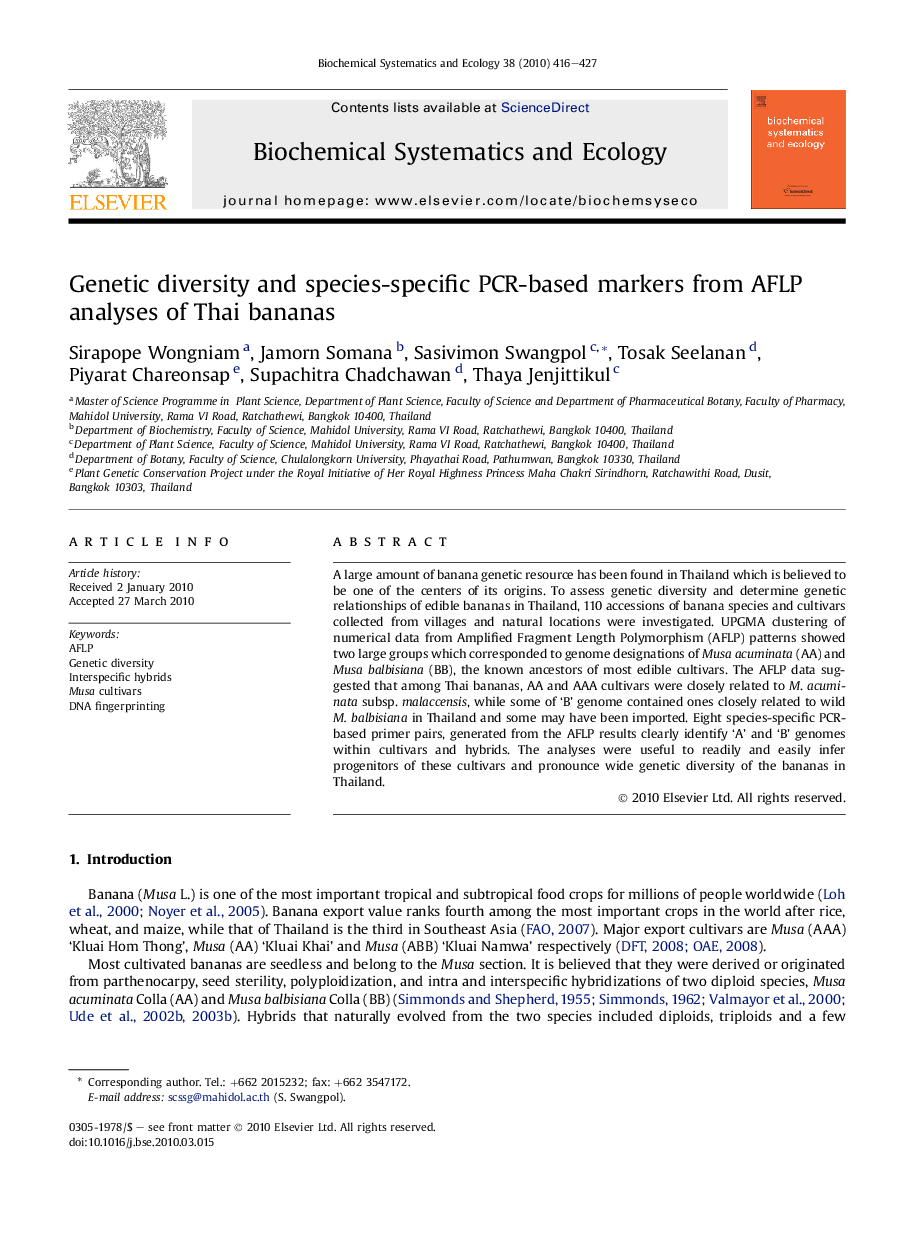| Article ID | Journal | Published Year | Pages | File Type |
|---|---|---|---|---|
| 1352080 | Biochemical Systematics and Ecology | 2010 | 12 Pages |
A large amount of banana genetic resource has been found in Thailand which is believed to be one of the centers of its origins. To assess genetic diversity and determine genetic relationships of edible bananas in Thailand, 110 accessions of banana species and cultivars collected from villages and natural locations were investigated. UPGMA clustering of numerical data from Amplified Fragment Length Polymorphism (AFLP) patterns showed two large groups which corresponded to genome designations of Musa acuminata (AA) and Musa balbisiana (BB), the known ancestors of most edible cultivars. The AFLP data suggested that among Thai bananas, AA and AAA cultivars were closely related to M. acuminata subsp. malaccensis, while some of ‘B’ genome contained ones closely related to wild M. balbisiana in Thailand and some may have been imported. Eight species-specific PCR-based primer pairs, generated from the AFLP results clearly identify ‘A’ and ‘B’ genomes within cultivars and hybrids. The analyses were useful to readily and easily infer progenitors of these cultivars and pronounce wide genetic diversity of the bananas in Thailand.
